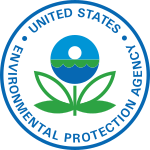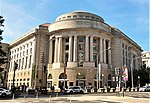Andrew W. Mellon Auditorium
Arthur Brown Jr. buildingsBeaux-Arts architecture in Washington, D.C.Buildings and structures completed in 1935Buildings of the United States government in Washington, D.C.Event venues on the National Register of Historic Places in Washington, D.C. ... and 8 more
Greek Revival architecture in Washington, D.C.Historic district contributing properties in Washington, D.C.Mellon familyMusic venues in Washington, D.C.NRHP infobox with nocatNeoclassical architecture in Washington, D.C.Northwest (Washington, D.C.)Office buildings in Washington, D.C.

The Andrew W. Mellon Auditorium (originally named the Departmental Auditorium) is a 750-seat historic Neoclassical auditorium located at 1301 Constitution Avenue NW in Washington, D.C. The auditorium, which connects two wings of the William Jefferson Clinton Federal Building, is owned by the U.S. government but available for use by the public.
Excerpt from the Wikipedia article Andrew W. Mellon Auditorium (License: CC BY-SA 3.0, Authors, Images).Andrew W. Mellon Auditorium
Constitution Avenue Northwest, Washington
Geographical coordinates (GPS) Address Nearby Places Show on map
Geographical coordinates (GPS)
| Latitude | Longitude |
|---|---|
| N 38.892611111111 ° | E -77.029697222222 ° |
Address
Andrew W Mellon Auditorium
Constitution Avenue Northwest
20423 Washington
District of Columbia, United States
Open on Google Maps











